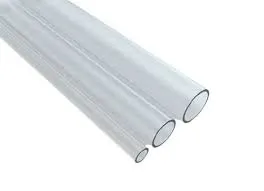Dec . 01, 2024 20:44 Back to list
Understanding PPR Pipe Applications for Cold Water Distribution Systems
Understanding PPR Cold Water Pipes Benefits and Applications
PPR, or Polypropylene Random Copolymer, has increasingly become a popular choice for plumbing applications, particularly for cold water systems. This modern piping solution offers numerous advantages that make it a favorable alternative to traditional materials like PVC, copper, and galvanized steel. In this article, we will explore the characteristics, benefits, and applications of PPR cold water pipes.
Characteristics of PPR Pipes
PPR pipes are made from high-quality polypropylene, a thermoplastic polymer known for its durability and resistance to corrosion. The random copolymer structure of PPR allows the material to withstand high pressures and temperatures, making it suitable for a wide range of water distribution systems. PPR pipes are available in various diameters and wall thicknesses, providing flexibility for different installation needs.
One of the most significant characteristics of PPR pipes is their smooth inner surface, which minimizes friction and allows for efficient water flow. Additionally, PPR pipes are lightweight, making them easier to handle and install compared to heavier materials like metal pipes.
Benefits of PPR Cold Water Pipes
1. Corrosion Resistance Unlike metal pipes, PPR does not corrode or rust, ensuring a longer lifespan and reducing the need for frequent replacements. This characteristic is particularly beneficial in environments where water quality can lead to pipe degradation.
2. Chemical Resistance PPR pipes are resistant to a variety of chemicals, including acids, bases, and salts. This makes them suitable for cold water systems in industrial applications where aggressive fluids may be present.
3. Low Thermal Conductivity PPR has low thermal conductivity, which helps maintain the temperature of the water flowing through the pipes. This feature is advantageous for cold water systems, as it reduces the risk of condensation and heat loss.
4. Ease of Installation The lightweight nature of PPR pipes simplifies transportation and installation. They can be easily cut and welded using heat fusion techniques, which creates a strong, leak-proof joint.
5. Cost-Effectiveness PPR cold water pipes are generally more affordable compared to metal pipes in both initial investment and long-term maintenance costs. Their durability and resistance to corrosion translate into savings over time.
ppr cold water pipe

6. Environmental Impact PPR pipes are recyclable, making them an environmentally friendly choice. Their production process results in less pollution compared to metal pipe manufacturing.
Applications of PPR Cold Water Pipes
PPR cold water pipes are versatile and can be utilized in various applications, including
1. Residential Plumbing Many homeowners are choosing PPR pipes for their cold water supply systems, as they provide reliable performance and a hassle-free installation process.
2. Commercial Buildings PPR pipes are increasingly being used in commercial plumbing due to their robustness and ability to handle higher pressure systems.
3. Industrial Applications In industries where chemical resistance is crucial, PPR pipes are employed for transporting cold water and other fluids safely.
4. Air Conditioning Systems PPR pipes are often used in air conditioning systems for chilled water distribution, thanks to their thermal insulation properties.
5. Irrigation Systems Farmers and agricultural businesses favor PPR pipes for irrigation, as they are lightweight and can easily be installed in various configurations.
Conclusion
PPR cold water pipes represent a modern, efficient, and reliable solution for water distribution systems across residential, commercial, and industrial applications. The benefits of corrosion resistance, chemical durability, and ease of installation make them an attractive alternative to traditional pipe materials. As more industries and homeowners recognize these advantages, PPR continues to gain popularity, establishing itself as a leading choice in plumbing and fluid transport systems. With its environmental benefits and cost-effectiveness, PPR is paving the way for sustainable plumbing solutions for the future.
-
High-Quality PPR Pipes and Fittings Durable ERA PPR & PVC PPR Solutions
NewsJul.08,2025
-
Black HDPE Cutting Board - Durable, Non-Porous & Food Safe HDPE Plastic Cutting Board
NewsJul.08,2025
-
High-Quality CPVC Panel Durable HDPE & PVC Panels Supplier
NewsJul.08,2025
-
Double PE Welding Rod Supplier - High Strength, Durable & Versatile Welding Solutions
NewsJul.07,2025
-
High-Quality PVC-O Pipe Supplier Durable 75mm PVC Pipe & Connections Leading PVC Pipe Company
NewsJul.07,2025
-
HDPE Drainage Pipe Supplier – Durable & Corrosion-Resistant Solutions
NewsJul.06,2025

